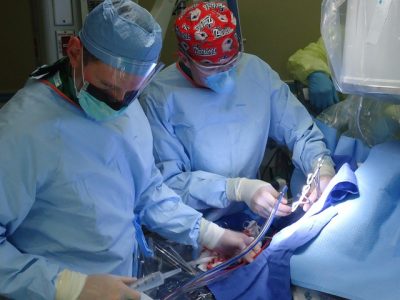Anesthesia in Plastic Surgery
 One question that’s always on the minds of our New York cosmetic surgery patients is anesthesia. It’s completely natural to wonder about the choices. It can be difficult for some to face the prospect of “going under,” but at the same time, no one wants to feel pain that could be avoided.
One question that’s always on the minds of our New York cosmetic surgery patients is anesthesia. It’s completely natural to wonder about the choices. It can be difficult for some to face the prospect of “going under,” but at the same time, no one wants to feel pain that could be avoided.
Here’s an overview of the various types of anesthesia used for plastic surgery and a general idea about how they’re used.
Local Anesthesia
Most people know what local anesthesia is from visiting the dentist. The patient receives one or several injections into the area to be treated, numbing nearby nerves. Local anesthesia poses almost no risks.
Minor cosmetic surgery procedures can be performed using local anesthesia, or local injections with perhaps an oral sedative. These include small areas of liposuction, eyelid surgery and scar revision. For even minor surgery, however, many doctors and patients elect more than local anesthesia for the sake of patient comfort.
Regional Anesthesia
An often-misunderstood option is regional anesthesia. Think of it as a “nerve block” such as an epidural given to many women during labor. It numbs the area of the body just above and below the injection point, allowing the patient to be awake during cosmetic surgery. Regional anesthesia is not commonly in use for cosmetic surgery, but it’s often chosen by plastic surgeons for procedures such as hand surgery. Like local anesthesia, it is very safe.
IV Sedation
Also called “twilight sedation” and “conscious sedation,” IV sedation consists of both a sedative and an anesthetic received by the patient through an intravenous line. Used for cosmetic surgery, it puts patients lightly asleep, eliminating the need for a breathing tube while ensuring patients feel no pain.
IV sedation poses very few risks and offers many benefits. It lets people wake up quickly and easily after a procedure and causes very few lingering effects such as nausea, sore throat and prolonged grogginess. However, it does take very close teamwork between surgeon and anesthesiologist, and many plastic surgeons are not comfortable with this approach. In addition, IV sedation is often not the best choice for extended surgeries, such as abdominal surgery after weight loss, when the patient must be completely still for a few hours.
General Anesthesia
According to Medscape, an online resource for health professionals, general anesthesia (GA) puts patients in a “controlled, reversible state of unconsciousness” via a combination of medications for analgesia, sedation, muscle paralysis and amnesia. Patients are put deeply asleep with both intravenous and inhaled medication, and a breathing tube must be used.
We use GA for complex, lengthy operations and for our New York cosmetic surgery patients who have certain health conditions, but many cosmetic surgeons favor GA for almost all procedures. It tends to make their job easiest by ensuring the patient will be immobile for as long as necessary. Properly administered to a healthy patient, general anesthesia is very safe, but there are well-known side effects. Medscape reports that ambulatory patients experience symptoms at these rates:
• Vomiting: 10-20%
• Nausea: 10-40%
• Sore throat: 25%
• Incisional pain: 30%
Our Approach to Cosmetic Surgery Anesthesia
We favor IV sedation for most of our New York cosmetic surgery patients. It’s important to us that patients go home after their procedure feeling alert and comfortable, rather than nauseous, woozy and even “hung over.” Patients appreciate feeling good after surgery too, often leaving our office feeling almost ready to resume normal life. One of our patients, Claire, even said she could have ridden the train home after surgery! (We didn’t let her, of course.)
We are also well aware that some people are very fearful of GA. IV sedation can be a reassuring choice for these patients.
As we mentioned, IV sedation requires a very tight-knit surgical team as the patient must be monitored very carefully and medication adjusted as needed. Fortunately, key members of our staff have worked hand-in-hand for nearly 30 years, performing thousands of procedures together. We have a full complement of modern technology available in our fully accredited operating suite, just in case additional anesthesia is needed.
Contact us to find out more about cosmetic surgery in New York with IV sedation. If you need to travel to work with us, with IV sedation you’ll be ready even sooner to enjoy Manhattan!